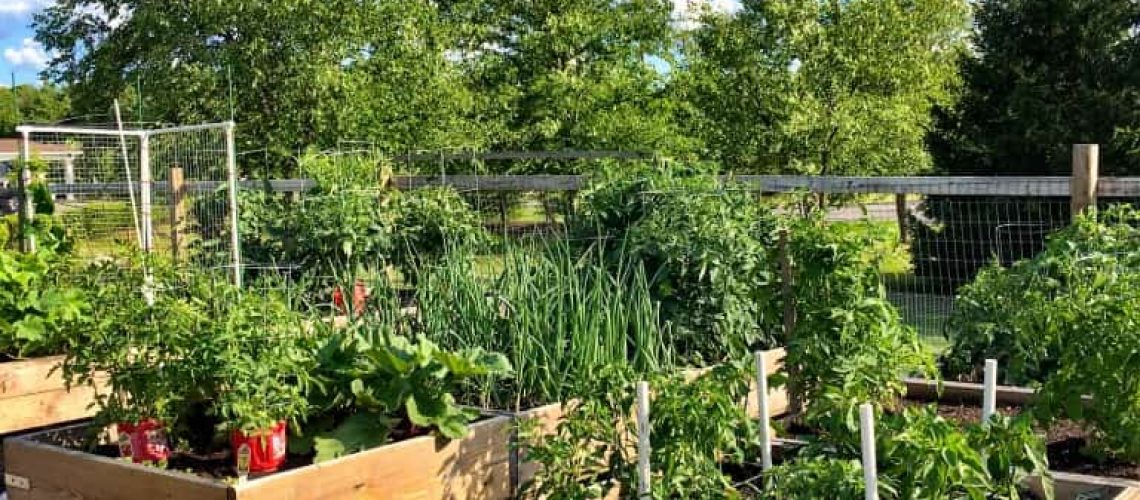Building a garden above ground can give your house an added element of nature and elegance. The best part is that you won’t just be adding an aesthetic appeal to your house, but you can also grow your produce. Who would like some fresh herbs and tomatoes right in their backyard? A garden above ground will be extremely easy to maintain once you have got it all set up. Let’s get into the details.

1. Material used so that you can build your garden above ground
First off, you will need to pick the material for the base since you will be building the entire raised garden bed from scratch. There are tons of different types of woods that you can opt for depending on your preference. For instance, there are many expensive but luxurious kinds of wood such as cedar and black locust, etc. They are more durable because of the presence of natural oils and will last you long. Whichever board you use, make sure that it is thick more longevity.
Moreover, keep in mind that you can use bricks and concrete blocks as well. The only con is that you will constantly need to work on the soil to maintain it. Just remember that any material you use should be rot-resistant to reduce the level of maintenance it will need.
2. Location
Next, once you have all the materials and tools in one place, move on to the next step of picking a spot. First off, like all other plants, your above-ground garden will also need tons of sunlight. Pick a spot where it will get access to sunlight. On the safe side, it is better to opt for an area where there are fewer chances of harsh winds as they can destroy tender plants easily. Also, stay away from that spot where rainwater tends to pool down.
3. Measurements
As the name indicates, when you are building a garden above ground, it will be of some length. There is no hard and fast rule as to how tall it should be, and you can get whatever your heart desires. Usually, they are around 8 to 12 inches above the ground. Length is another aspect that can be designed around your preferences. Many times people tend to go for you 4-5 feet long garden beds.
4. Digging in
Moving on, the next step will be digging into the dirt to build your raised garden. Start by putting stakes of wood at each of the corners. If you want your bed to be longer in size, then you can place the wooden stakes a few feet away from each other. While placing them, make sure that they are inside the bed so you can hide them easily.
Push them around 2 feet into the surface and leave the rest above. It is important to make sure that all the stakes are at an equal level. You don’t want an even garden now, do you? Go ahead and start by placing the lowest board. This should be some inches under the ground level. By using screws or nails, attach the boards to the stakes you planted earlier.
5. Soil mixture
This is the part that can make or break your garden. Having the right soil mixture holds the utmost importance when it comes to getting a long-lasting garden. First off, you will need to have a combination of organic materials on hand. Take some portions of compost, manure, topsoil, etc., and make a mixture of all these. Ideally, topsoil is present in two parts, while compost can be taken in one part.
All these organic materials are easily available at home improvement stores, and you can get them in bulk for future soil preparation. You can also use commercial soil if you plan on growing vegetables.
6. Maintenance of the soil
As mentioned, the soil will be a major factor that comes into play when aiming for a successful raised garden. Your job simply doesn’t end once you have created the soil combination and added it to the garden, no. Once you are done, you need to work on the maintenance of the soil. The organic material in these raised beds is prone to getting dry more quickly.
The maintenance will vary from one season to another. You will notice that it will require less attention in fall and spring as the natural nutrition will be enough. But, as soon as the summer season rolls in, you will have to work on it a little. It is advised to get some hay or straw and place it on the soil. This hay or mulch-like material will help retain the moisture and prevent your soil from completely drying out.
Lastly, maintenance involves frequent watering as well. These gardens above the ground won’t need any more of your attention as they grow out, but initially, you will need to pay some heed to it. In the growth stage, you can guarantee the success of your raised garden with proper care.
7. Design the layout
Last but not least, you can work on designing the layout of the garden. Designing the layout can be a step, but it will require a little planning. First, start by jotting down all the vegetables or plants you want to have in your raised garden. Next, allocate a space for each vegetable or plant-based on its size. The trick is to place all the tall ones like corn in the center of the bed. Place the medium-height plants on the sides, and lastly, put all your short plants right near the edges.
This way, each of them will have an adequate amount to grow, and plucking will easier too.
Check out this video of how to build your garden above ground:
<iframe width=”560″ height=”315″ src=”https://www.youtube.com/embed/MBIYebUgVVI” frameborder=”0″ allow=”accelerometer; autoplay; clipboard-write; encrypted-media; gyroscope; picture-in-picture” allowfullscreen></iframe>
Building a garden above the ground might sound like a lot of work, but in reality, it is the most fun you will have in your garden, that too, without any hassle. Check out the tips mentioned above and get that hand-built piece of heaven.

